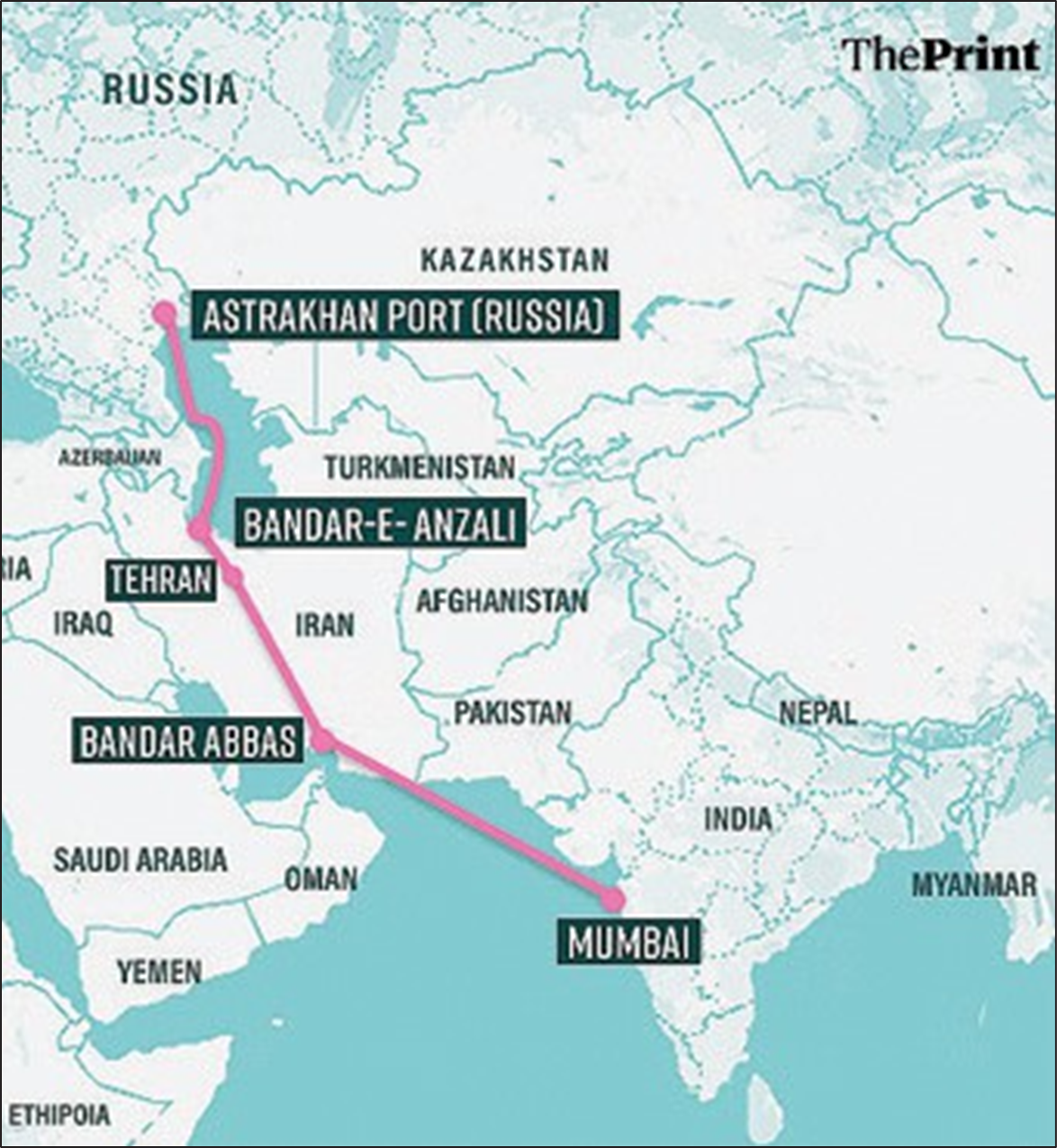May 10, 2024
 I ran’s long-mooted International North South Transport Corridor (INSTC) may finally get off the ground, courtesy of Russia’s invasion of Ukraine. That’s because the invasion has crushed most of Russia’s links with Europe and forced it to look at links to the south and east.
I ran’s long-mooted International North South Transport Corridor (INSTC) may finally get off the ground, courtesy of Russia’s invasion of Ukraine. That’s because the invasion has crushed most of Russia’s links with Europe and forced it to look at links to the south and east.
Proposed in 2000, INSTC was initially meant to transport goods from India to Russia via Iran as an alternative to the conventional Suez Canal route. But geopolitics and administrative issues meant the proposed corridor soon went dormant.
Two decades later, the INSTC has become active once again. ThePrint, an Indian online news outlet, talked to diplomats, Indian officials, and academics and reports that the trade boom between India and Russia since the invasion of Ukraine coupled with New Delhi’s vested interests in Iran’s Chabahar Port has brought the once-dormant transport corridor back into focus.
At the time of its proposal, it was an ambitious project: 7,200 km of sea, rail and road lines crossing numerous borders. India was to gain access to the Central Asian and Eurasian markets, while bypassing Pakistan.
Apart from India, Russia and Iran, 10 more countries Azerbaijan, Armenia, Kazakh stan, Kyrgyzstan, Tajikistan, Turkiye, Ukraine, Belarus, Oman, and Syria all signed onto the project. But implementation waned.
This was due to such things as poor rail service within Iran, few cargoes going southbound to match the northbound traffic and burdensome customs clearances at various borders, sources in the Indian shipping ministry told The Print.
The corridor also had the problem of many “modal” changes. Cargo going to Europe is loaded on a ship in India, goes through the Suez Canal and gets unloaded at a port in Europe.
But for INSTC, cargo is loaded on a ship in India, unloaded at an Iranian port where it is loaded on an Iranian railway car that goes to the Caspian Sea, where it is offloaded from the train and loaded on a ship that crosses the Caspian where it is offloaded from the ship and put back on a railway car to cross Russia. Whew! In the process, it crosses a number of borders.
“When the dry runs were conducted, it was found that streamlining of common clearances at borders was needed an issue that may affect IMEC (India-Middle East Europe Economic Corridor), too.
When a cargo goes from a port to a truck and then a rail route, and there is additional paperwork or clearances, it creates a burden on the exporter,” one of the sources said. In 2014, the Indian Ministry of Commerce and Industry conducted a dry run from Mumbai to Bandar Abbas by sea, then to Bandar Enzali by rail and then by sea onto Russia’s Astrakhan port.
Two dry runs were conducted in 2014 and 2017 on two routes to Azerbaijan via Iran and to Russia’s Astrakhan via the Caspian Sea. The studies found the INSTC more cost- and time-effective than the Suez Canal route, according to Shankar Shinde, former chairman of Freight Forwarders Associations in India (FFFAI).
Shinde led the 2014 dry run from the Indian side on behalf of the Ministry of Commerce and Industry. “We concluded that this was a viable route but insurance, documentation and other issues remained,” Shinde told ThePrint. “But the INSTC has been operational since 2018-19.
American sanctions [against Iran] slowed things down, but smaller shipments did flow before July 2022.” In July 2022, the first major commercial consignment through the INSTC was sent from Russia to India. “When Iran came under US sanctions in 2019, Indian companies became cautious [of INSTC]. But sanctions against Russia [after the invasion of Ukraine in 2022] led to a boost in India’s trade with Moscow which brought some positivity back into the conversation about INSTC and revived it in a way,” Gulshan Sachdeva, Professor of European Studies at Jawaharlal Nehru University, told The Print.
Originally, the INSTC was viewed as a potential way to route goods to Europe through Russia, though that has been dampened after Moscow launched its war against Ukraine.
The corridor is dependent on the Caspian Sea now because the Iranian railway system does not provide a good link to the old Soviet rail system. Russia, however, is funding and helping build the “missing link” connecting the Azerbaijani and Iranian railways.
This is about 170 km of rail between Rasht on the Caspian Sea and Astara, the border crossing between Iran and Azerbaijan, where the old Soviet rail system can be accessed. Construction of the rail link is set to commence this year.
While Bandar Abbas has been Iran’s busiest southern port, India has long been pushing for the Chabahar Port to be linked to the INSTC as well. Unlike Bandar Abbas, Chabahar is located closer to India’s west coast and is a deep seaport that can take full-size container ships.
India has already invested in one of two ports at Chabahar Shahid Beheshti. It has committed about $500 million toward development of this port since 2016, back when Chabahar allowed India access to pre-Taliban Afghanistan, bypassing Pakistan.
India and Iran appear close to finalizing a long-term contract for the port. Sources in the Iran Embassy in India told The Print that the deal could be signed “within weeks,” which could increase the “speed of goods transit” and the “capacity of the INSTC.”
That said, INSTC is yet to fully materialize on the ground. “Indian exporters still face challenges. Banks are hesitant to touch any goods that transit through Bandar Abbas due to sanctions [against Iran].
There also aren’t enough large freight forwarders to ensure quick movement of cargo across the multiple modes of transport,” explained Ajay Sahai, Director General & CEO of the Federation of Indian Export Organizations (FIEO).





















